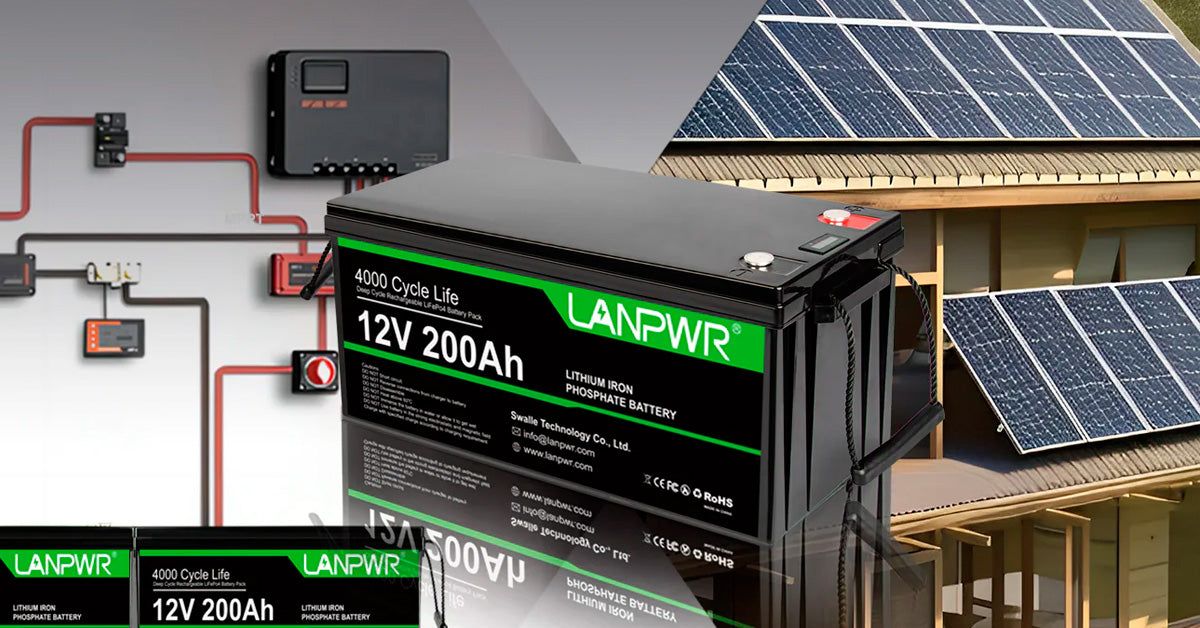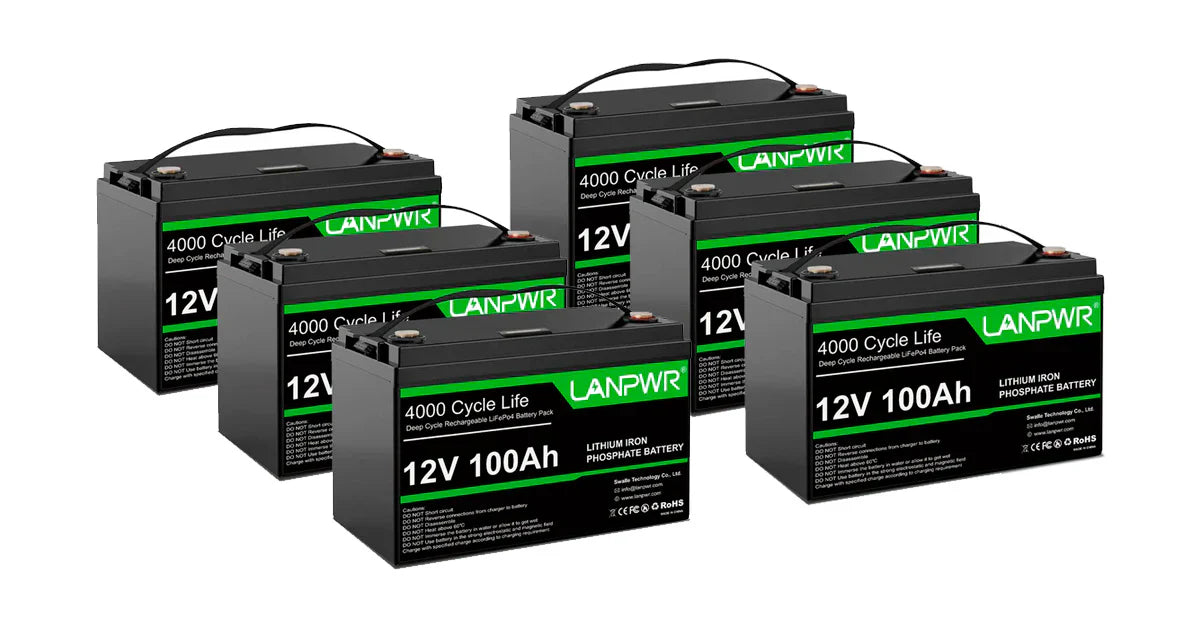Lithium Iron Phosphate (LiFePO4) batteries belong to the lithium-ion battery technology and have gained their popularity because of excellent performance characteristics. You will find these batteries of lithium iron phosphate in a wide range of applications, from electric vehicles to solar energy systems and portable electronics. The longevity of any battery technology used is one of the most important features. The lifespan of the LiFePO4 battery pack, factors affecting its durability, and how one can maximize its useful life are what this article will discuss.
Knowing LiFePO4 Batteries' Chemistry
LiFePO4 batteries have very stable chemistry, which offers a suite of advantages over most other lithium-ion batteries. The advantage you get will include safety: these batteries are less likely to enter thermal runaway this process leads to high temperatures, causing the battery to blow up in a big inferno of fire. They can resist a more significant number of charge and discharge cycles than other lithium-ion batteries, as per measures, and offer a more stable output voltage under different load conditions. These batteries find utilization in many applications. LiFePO4 batteries are an eco-friendly option for your use than other lithium-ion batteries, as they do not make use of cobalt and have reduced environmental and health-related concerns in the development and disposal processes.
Factors Affecting the Lifespan of a Battery Cell
Several factors can influence the lifespan of a Lithium Iron Phosphate (LiFePO4) battery pack. It is great to consider these factors when devising a way of maximizing battery performance and durability. Here is a breakdown of all the factors:
This is the number of full charge and discharge cycles that a battery can perform before its performance falls below the required threshold. LiFePO 4 batteries have long cycle life, usually quoted in several thousand cycles, ranging from 2,000-5,000, and with high quality going up to 10,000 cycles. Other factors that affect the cycle life are Depth of Discharge (DoD), temperature, and practice during charging the battery.
DoD is the proportion of the battery's capacity that gets used in each cycle. Every other thing being constant, a lower DoD will typically lead to a longer life of the battery. I mean, a battery that is consistently discharged to 50% of its capacity will last longer than one that is regularly discharged to 100%. When the Battery is not entirely depleted, then very little stress is exerted on the cells of the Battery. Therefore, the life of the Battery is extended.
The temperature has a significant impact on the performance and life of LiFePO4 batteries. High and low temperatures are not good for the battery. High temperatures will degrade the electrolyte, thereby increasing the internal resistance, hence reducing the capacity. On the other hand, low temperatures will make the chemical reactions slow inside the Battery. This would thereby trouble the efficiency. But both low and high temperatures will affect the battery's performance and life. The battery should be both operated and stored in the temperature range that the manufacturer recommends for the best lifespan.
These are, simply put, the rates at which a battery is charged and, on the other hand, the rate at which a battery discharges. If it is charged and discharged too rapidly, heat may be produced, and the battery can become stressed; all this may result in low life. The manufacturer provides the optimal charge and discharge rates so that the battery provides service without undue stress. Following such directions will increase the battery's health in the long run.
It is proper for LiFePO4 batteries to be maintained. The following habits are helpful:
- No Overcharging: Overcharging will cause overheating and thus damage the cells of the battery.
- Avoiding Deep: Discharge Over time, over-discharge damages the battery.
- Balancing Cells: Ensuring all cells in the battery pack are charged equally avoids overwork or degradation of a single cell.
- Regular Checks Periodic: Checking the state of health of the battery and following the manufacturer's guidelines on maintenance can avoid severe issues.
Proper storage conditions are vital for the lifespan of a battery. In times of non-use, the proper and recommended way to store batteries is in a cool, dry place with a partial state of charge, usually 50 to 70%. This is important to prevent its capacity from reducing and degrading over time.
Usage patterns can also play a major role in the overall life expectancy of a LiFePO4 battery. High-stress uses, like heavy discharging and charging or high-level operation, can cut down the life of a battery. At the same time, moderate or consistent usage is more favorable for a longer life of a battery.
The quality of a battery, such as its materials and how it is built, will also make a difference. High-quality LiFePO4 batteries have, generally speaking, been made with premium materials and subjected to strict quality measures. For that reason, they will often last longer and outperform poor-quality batteries.
Life Expectancy
Keeping all these things aside, the life expectancy of a LiFePO4 battery back could be largely looked at as:
- On Average: Normal Life Span: A LiFePO4 battery pack can last anywhere between 5 to 15 average years when used normally.
- High Quality: Premium LiFePO4 batteries can reach up to 20 years of life, especially when used in optimum conditions and with the right maintenance procedures.
Maximizing the Battery Life
LifePO4 batteries are generally a significant investment. Usage, charging, storage, and maintenance best practices are necessary for optimizing the return on that investment. The following provides detailed guidelines on obtaining the most from your investment:
Shallow depth of discharge
- Avoid full discharge: Regular discharges are very harmful to the battery and can cause fast aging. Try to keep the depth of discharge (DoD) of the battery at most cycles between 20% to 80%. This will put less stress on the cells and they will thus better help hold capacity over time.
- Use partial discharges: A battery that is frequently partially discharged will put less stress on the battery than if it were deep-cycled. For example, a discharge to only 50% and then recharging is much more effective on the battery compared to running it down to a low battery percentage.
- Optimal charging: Always use chargers made for LiFePO4 batteries. These chargers come with the correct voltage and amperage settings and will safely charge your battery.
- Overcharging: Overcharging may cause overheating and damage to battery cells. Now this is possible with a charger with built-in protection.
-
Correct rates of charging: Use the manufacturer's recommendations for charge rates. That means avoiding rapid charging unless one needs that certain amount of power very quickly because this rapid charging can create heat and stress on the battery.

- Ideal operating temperatures: LiFePO4 cells perform best within a range of 20°C to 25°C or about 68°F to 77°F. Temperature extremes will cause the battery to degrade its capacity and reduce its lifespan.
- Thermal management systems: For any applications that have the possibility that the battery temperature will be outside the ideal range, consider thermal management systems that will keep the battery in its ideal temperature range.
- Regular Monitoring of Battery Health: A battery's health should be monitored from time to time, using the appropriate diagnostic tools. These tests will greatly help in identifying potential points of failure earlier, thus allowing for preventive maintenance.
- Cell Balancing: Ensure periodical cell balancing of all cells in the battery pack. Unbalanced cells will lead to either overcharging or over-discharging, which means a reduced life span of the battery pack.
- Clean Battery Contacts: Make sure battery contacts are clean and free from corrosion. Dirty contacts may lead to poor connections, a condition that results in an inefficient battery.
- Store with a Partial Charge: When storing a battery for a long period, it should be stored in a partial state of charge—around 50–70%. Storing a battery in either a fully charged or discharged state degenerates the capacity of the battery.
- Store in a Cool, Dry Place: Avoid storing batteries in places with high humidity or extreme temperatures. Store them in a cool and dry environment.
- Minimizing High-Load Applications: Continuous high-load applications generate excessive heat and stress the battery. It is therefore prudent to avoid running the battery at its maximum load capacity for an extended period, if possible.
- Avoid Rapid Cycling: Rapid charging and discharging are stressful; therefore, moderate the rate of charge and discharge to avoid the battery being stressed.
- Quality Batteries
- Use Quality Batteries: LiFePO4 batteries of higher quality generally have a longer lifespan and perform better. Whenever possible, one is encouraged to invest in good brands of LiFePO4 batteries and to source them from reputed suppliers.
- Follow Manufacturer Specifications: Follow the manufacturer's specifications and guidelines. Following the recommendations ensures that the battery is operated within safe limits and in an optimized state.
Summary
LiFePO4 battery packs are a reliable source for long-term energy storage that has numerous priceless benefits over others in lithium-ion batteries. Therefore, practicing the proper ways of use and maintenance to get the best service from a LiFePO4 battery pack in various applications makes it a worthy investment in modern energy solutions.














Leave a comment
This site is protected by hCaptcha and the hCaptcha Privacy Policy and Terms of Service apply.